Letters to the Editor
In a bad light
With a great deal of surprise I read the article “NRT rabbi’s contract not renewed” (Dec. 31). As a result, I am concerned about the impact of this news on the NRT congregation, as well as on our community at large.
During conversations with members of the New Reform Temple (NRT), several people expressed total surprise, not only that Rabbi Cukierkorn had been dismissed by the board, but the way in which it was done. One elderly member, who doesn’t want to be identified, said to me, “I knew that there was some bad blood between one or two board members and the rabbi, but Rabbi Jacques has done wonderful things for our congregation. I wish they had asked my opinion before firing him.” A couple confided that their family will gladly follow Rabbi Cukierkorn to his next post.
Technically, a board is entitled to hire and fire the rabbi, but a good board seeks outside intervention, if needed, to resolve conflict. More importantly, a board worth its salt considers the impact of firing its rabbi, as a private act of the board, on the whole congregation. In effect, from the feedback I received, it appears that even transition planning was an afterthought in this event.
Personally, I’m concerned that when we do not apply the Jewish principles that we espouse, especially to our own religious leaders, it puts our community under a bad light.
Eduard de Garay
Overland Park, Kan.
Bewildering decision
Thank you for your coverage (Dec. 31) of the decision by the board of the New Reform Temple to dismiss the Temple’s rabbi of 11-plus years. Your coverage began with the announcement of the dismissal by the temple president, but I am still puzzled by the board’s bewildering action.
As you reported, the Temple has thrived under the rabbi’s leadership: Membership is up. Service attendance is up. The variety of services provided by the Temple is up. Likewise ingenuity, vivacity, intellectual challenge.
Thanks to the rabbi’s creativity, we, as congregants, have enjoyed guided tours of the Nelson-Atkins Museum of Art that have focused on Jewish themes. Thanks to his energy, we have engaged in lively discussions (over lunches and even during Sabbath evening services) of issues that are critical to us — as Jews, as Americans and as citizens of the world.
And, as you note, thanks to his scholarship, we, as a congregation, have benefited from the prestige that flows from having a rabbi whose literary endeavors have been translated and published for a global readership.
All this, you would think, would be dayenu ... enough. That he accomplished all this while continuing to offer the very best of the more traditional, even routine, services one expects from a rabbi: encouragement in learning, consolation in grief, companionship in Jewish life.
I have lived long enough and been blessed enough to have known some pretty great rabbis, but none as accessible, as enthusiastic, as creative, as entertaining or as pleasant as Jacques Cukierkorn.
The board, by contrast, has shown itself to be aloof, narrow-minded, arrogant and cowardly. It neither seeks the counsel of the congregation before firing the rabbi nor stoops to explain its decision after the fact.
If, as Thomas C. Barnett, board president, would have us believe, the decision to fire Rabbi Cukierkorn were truly “the culmination of a long and thorough process,” why is this the first that the congregation has heard of it? Where are the artifacts of that process? Mr. Barnett concedes “the progress the congregation has enjoyed during [Rabbi Cukierkorn’s] leadership.” But he offers no hint as to how that progress may have fallen short of the board’s expectations.
Decisions as momentous as this in the life of a synagogue should originate with the congregation and end with the ratification of the board. They should not begin and end with the board.
John LaRoe
Member, New Reform Temple



 My name is Lilach Nissim, and I’m Kansas City’s new Israeli emissary (shlichah). I arrived in Kansas this November to work on staff at the Jewish Federation of Greater Kansas City. My main job here is to educate Kansas Citians about Israel — wherever there is a need.
My name is Lilach Nissim, and I’m Kansas City’s new Israeli emissary (shlichah). I arrived in Kansas this November to work on staff at the Jewish Federation of Greater Kansas City. My main job here is to educate Kansas Citians about Israel — wherever there is a need. 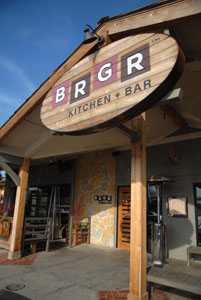 So what happens to those cranky kids who whine until mom agrees to drive through McDonalds for a Happy Meal of a burger and fries? Earlier incarnations of those whiny kids in Kansas City might have pleaded for burgers at Winstead’s original restaurant on the Plaza, or maybe even Wimpy’s on Troost. The kids grow up, eventually. And, though they later find themselves saddled with problems that loom far larger than the ones that plagued their collective youth, they still crave those burgers. Enter BRGR (4038 W. 83rd, Prairie Village), and other such establishments, that have found a way to harness the iconic burger for those of us who have grown up. Gotten older, anyway.
So what happens to those cranky kids who whine until mom agrees to drive through McDonalds for a Happy Meal of a burger and fries? Earlier incarnations of those whiny kids in Kansas City might have pleaded for burgers at Winstead’s original restaurant on the Plaza, or maybe even Wimpy’s on Troost. The kids grow up, eventually. And, though they later find themselves saddled with problems that loom far larger than the ones that plagued their collective youth, they still crave those burgers. Enter BRGR (4038 W. 83rd, Prairie Village), and other such establishments, that have found a way to harness the iconic burger for those of us who have grown up. Gotten older, anyway.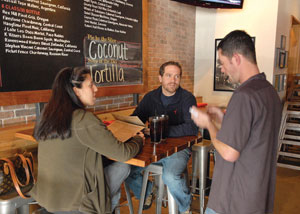 Sandwich options abound outside of the traditional burger realm. One friend sampled the Portobella Mushroom ($8) (from the described “Not-So-Burgers” section). This sandwich of marinated, grilled and flavorful Portobello mushrooms was on tasty, buttered ciabatta slathered with a light herb spread and watercress salad. Another dining companion had never tried Kobe beef, and wanted to see how it compared with the American burger she had eaten her whole life. Kobe beef comes from cattle fed a special diet, pampered and raised in Kobe, Japan. She ordered the Kobe Beef Sliders ($10), three thick sliders served on truffle brioche buns with oven-dried tomatoes, onions, provolone and “special sauce” (tasting prominently of BRGR’s house-made ketchup, a rich condiment that had a slightly smoky flavor — though kids and select adults who eat here may request the more mundane and familiar Heinz version). Our companion wanted to order the sliders “well-done,” which our waitress wisely advised against. Though they compromised on “medium-well,” the sliders arrived in the ballpark of medium rare to medium. Candidly, it seemed wrong to cook the superior Kobe beef anywhere beyond that. This same waitress exhibited solid menu knowledge, paced the meal well, and was sweet and patient with our kids — even when our tired 2-year-old napped all through one dinner with his little head on the rustic table.
Sandwich options abound outside of the traditional burger realm. One friend sampled the Portobella Mushroom ($8) (from the described “Not-So-Burgers” section). This sandwich of marinated, grilled and flavorful Portobello mushrooms was on tasty, buttered ciabatta slathered with a light herb spread and watercress salad. Another dining companion had never tried Kobe beef, and wanted to see how it compared with the American burger she had eaten her whole life. Kobe beef comes from cattle fed a special diet, pampered and raised in Kobe, Japan. She ordered the Kobe Beef Sliders ($10), three thick sliders served on truffle brioche buns with oven-dried tomatoes, onions, provolone and “special sauce” (tasting prominently of BRGR’s house-made ketchup, a rich condiment that had a slightly smoky flavor — though kids and select adults who eat here may request the more mundane and familiar Heinz version). Our companion wanted to order the sliders “well-done,” which our waitress wisely advised against. Though they compromised on “medium-well,” the sliders arrived in the ballpark of medium rare to medium. Candidly, it seemed wrong to cook the superior Kobe beef anywhere beyond that. This same waitress exhibited solid menu knowledge, paced the meal well, and was sweet and patient with our kids — even when our tired 2-year-old napped all through one dinner with his little head on the rustic table.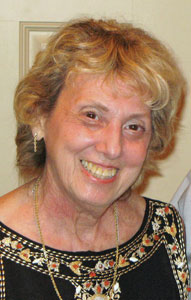 Jerusalem — All week we had been watching with horror the scenes on television and reading about the Carmel fire in the newspapers, the 10,465 acres destroyed and 43 victims.
Jerusalem — All week we had been watching with horror the scenes on television and reading about the Carmel fire in the newspapers, the 10,465 acres destroyed and 43 victims.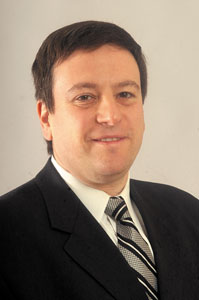 At least monthly people walk into my congregation, The New Reform Temple in Kansas City, Mo., and tell me they have never been inside the building before. Some are newcomers to Kansas City, some have lived here their whole lives. I am sometimes amazed at how little most of us know about other congregations as well as Jewish Kansas City sites and personalities in our area.
At least monthly people walk into my congregation, The New Reform Temple in Kansas City, Mo., and tell me they have never been inside the building before. Some are newcomers to Kansas City, some have lived here their whole lives. I am sometimes amazed at how little most of us know about other congregations as well as Jewish Kansas City sites and personalities in our area.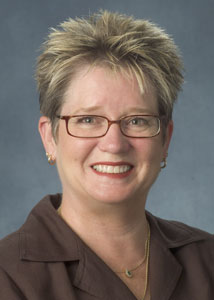 Mental illness isn’t fun. And, nothing in my 56 years of experience prepared me for dealing with mental illness when it struck my family. Seemingly out of the blue, our loved one’s puzzling behavior began disrupting our lives in ways we could have never imagined. It took us more than seven years to untangle the fact that she was suffering from anxiety, depression and obsessive compulsive disorder, all of which had been triggered by post-traumatic stress disorder that had emerged during her college years. Compounded by addiction to prescription drugs, our loved one’s journey took literally dozens of specialists to discover her underlying illnesses and find adequate resources to develop a path to recovery.
Mental illness isn’t fun. And, nothing in my 56 years of experience prepared me for dealing with mental illness when it struck my family. Seemingly out of the blue, our loved one’s puzzling behavior began disrupting our lives in ways we could have never imagined. It took us more than seven years to untangle the fact that she was suffering from anxiety, depression and obsessive compulsive disorder, all of which had been triggered by post-traumatic stress disorder that had emerged during her college years. Compounded by addiction to prescription drugs, our loved one’s journey took literally dozens of specialists to discover her underlying illnesses and find adequate resources to develop a path to recovery.